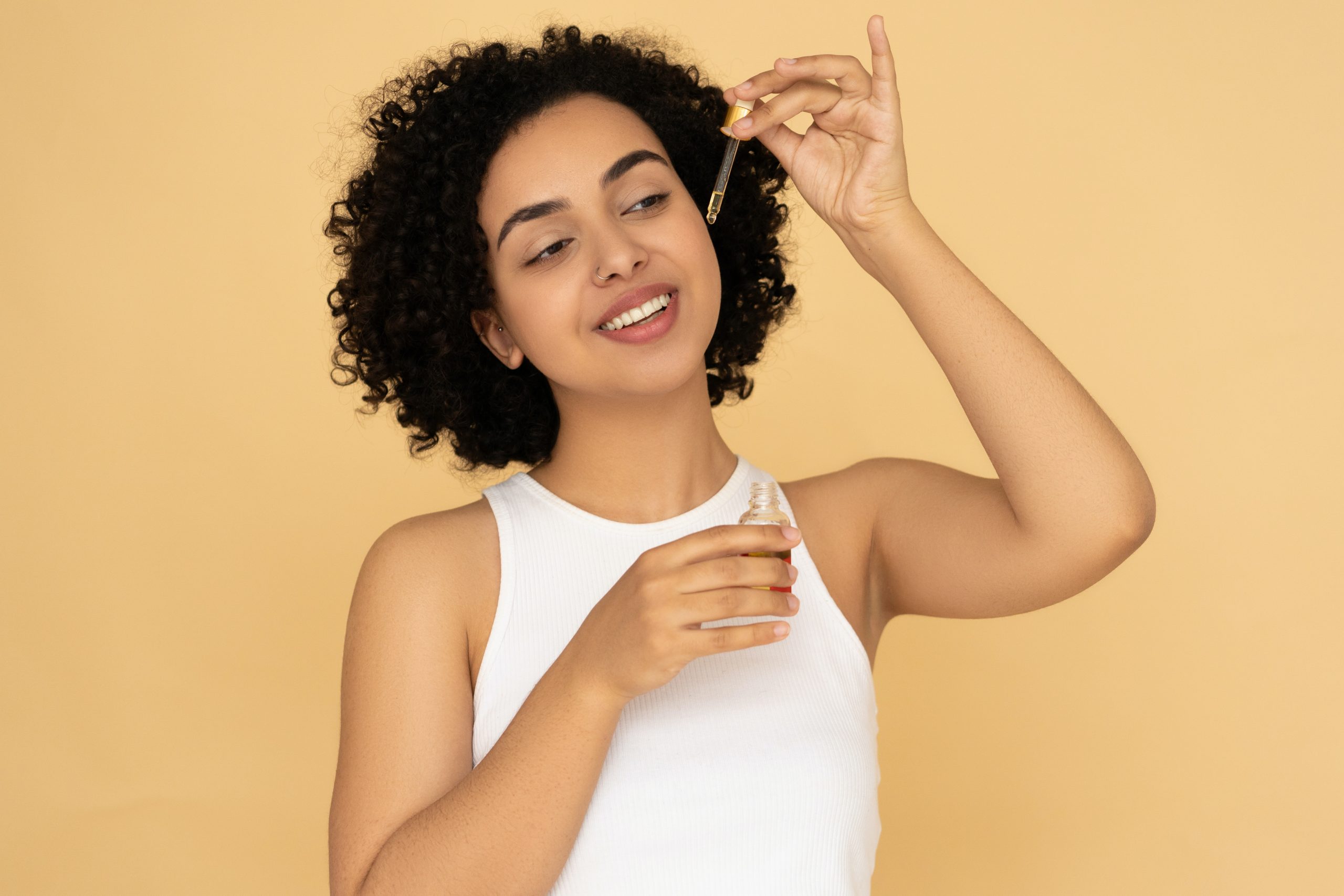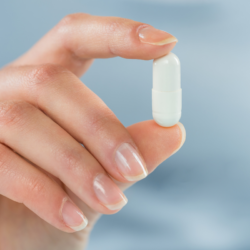Evening primrose oil is extracted from the seeds of the evening primrose plant. It is rich in essential fatty acids, particularly gamma-linolenic acid (GLA), which is beneficial for skin health. In this article, we’ll discuss the benefits of evening primrose oil on the skin and how it can enhance your skincare routine.
Evening primrose oil has been used for centuries for its health benefits, but is often overlooked when it comes to skincare. However, many people have begun to discover the benefits of evening primrose oil for their skin and are using it as part of their skincare routine.
What is evening primrose?
Evening primrose oil is rich in omega-6 polyunsaturated fatty acids, with linoleic acid accounting for over 65% and gamma-linolenic acid (GLA) for 7% to 14%. It also contains between 5 and 11% oleic acid, an omega-9 monounsaturated fatty acid, and saturated fatty acids, with 2 to 3% stearic acid and 5 to 7% palmitic acid. Enriched with vitamins E and F, triterpenic acids and polyphenols, it offers antioxidant and anti-inflammatory properties. GLA, a precursor of prostaglandin E1, plays a crucial role in reducing inflammation, while linoleic acid helps regulate cholesterol levels.
Extracted from the seeds of the evening primrose flower, this oil comes from a small yellow flower that opens at the end of the day and fades at dawn. Native to North America, the Amerindians used evening primrose for its many health benefits, particularly in the treatment of skin diseases. Today, evening primrose is cultivated worldwide, valued for its therapeutic and cosmetic properties.
As well as GLA,evening primrose oil contains other essential fatty acids. This component, which accounts for around 10% of the oil’s composition, is essential because the human body cannot produce it naturally. Primrose is appreciated for its many uses, and is particularly suitable for caring for dry, mature and sensitive skin, as well as dry and damaged hair.
Its organoleptic and physical characteristics are defined by its appearance as a fluid oily liquid, its colour ranging from pale yellow to green, its characteristic odour, its dry feel and its slightly bitter taste. Its fatty acid composition mainly comprises linoleic acid (omega 6 PUFA) at 65 to 85%,gamma-linolenic acid (omega 6 PUFA) at 7 to 14%,oleic acid (omega 9 MUFA) at 5 to 12%,palmitic acid (SFA ) at 4 to 10% and stearic acid (SFA) at 1 to 4%. Evening primrose oil, whose INCI name is Oenothera Biennis Oil, is therefore a valuable ingredient in cosmetics and nutrition.
The benefits of organic evening primrose oil for my skin
Pranarom organic evening primrose oil, for example, is without doubt the beauty oil for women, for their daily well-being and beauty. Evening primrose oil is recommended for mature skin from the age of 40. It is suitable for very sensitive and reactive skin.
- Prevents skin ageing
- Improves the radiance and beauty of hair, nails and skin
- Promotes circulation and blood activity
- Provides feminine comfort
Evening primrose oil’s main virtue is to tighten skin tissue. Experts particularly recommend evening primrose oil for mature skin, to combat the appearance of wrinkles thanks to its restructuring and regenerating effects on the epidermis. As skin ages, it tends to become dehydrated and thinner.Evening primrose oil provides deep, intense hydration, preserving the skin’s tone and firmness. It can be applied to the face and body, including areas where the skin becomes more fragile, such as the eyelids or chest.
Reduces skin inflammation
Evening primrose oil is beneficial for people suffering from inflammatory skin conditions such as eczema and psoriasis. The GLA present in evening primrose oil can help reduce skin inflammation by regulating the production of prostaglandins, which are compounds responsible for inflammation.Evening primrose oil is naturally rich in omega-6 fatty acids, particularly gamma-linolenic acid, which plays an anti-inflammatory role. This acid influences the inflammatory process in two ways: it is a precursor in the biosynthesis of prostaglandins E1, anti-inflammatory substances, and acts as an inhibitor of leukotrienes A4, pro-inflammatory compounds. Evening primrose oil therefore stimulates the synthesis of natural anti-inflammatory hormones while inhibiting the production of inflammation mediators.
Improved skin hydration
Evening primrose oil is also beneficial for people with dry skin. The essential fatty acids present in evening primrose oil help to rebuild the skin’s lipid barrier, which helps to retain moisture and improve skin hydration.
Evening primrose oil is rich in antioxidants, which help to reduce the damage caused by free radicals and prevent the signs of ageing, such as fine lines and wrinkles. What’s more, the GLA present in evening primrose oil can help reduce the appearance of age spots and sun spots.
Evening Primrose Oil ‘s rich fatty acid composition gives it cell regeneration properties, promoting skin repair. This oil also helps to soften and nourish the skin, making it supple and elastic. Its sterol content helps combat the signs of skin ageing.
How can I limit the side effects of isotretinoin?
According to the study entitled“Effect of evening primrose oil supplementation on certain parameters of skin condition in a group of patients treated with isotretinoin – a randomised double-blind trial“, evening primrose oil has demonstrated remarkable benefits for skin health. The research showed that evening primrose oil, when taken internally, helped to significantly improve skin hydration and elasticity. Participants in the study, who were undergoing isotretinoin treatment for severe acne, experienced a significant reduction in skin dryness symptoms thanks to this supplementation. These results underline the effectiveness of evening primrose oil as a natural solution for those seeking to improve the condition of their skin, reinforcing its potential as a beneficial dietary supplement for skin health.
Reduction in acne and blemishes
Evening primrose oil can help reduce acne and blemishes thanks to its anti-inflammatory and antibacterial properties. It can help calm the inflammation of the skin associated with acne and prevent bacterial infections. What’s more, the essential fatty acids found in evening primrose oil can help regulate sebum production, which can also help reduce acne and blemishes.
Evening Primrose vegetable oil, rich in gamma-linolenic and linoleic acids, shares with Borage oil an ability to regulate the hormonal system. This property makes it useful in the fight against menstrual pain, hot flushes and acne.
Evening Primrose Oil is rich in nutrients essential for skin health, such as vitamin E and zinc. These nutrients can help nourish and protect the skin, which can improve its appearance and overall health.
Using evening primrose oil
Evening primrose oil, extracted from the seeds of the Oenothera biennis plant, is renowned for its multiple health and cosmetic benefits. Rich in essential fatty acids, particularly gamma-linolenic and linoleic acids, it plays a crucial role in regulating the hormonal system, reducing inflammation and supporting skin health. Its varied and beneficial uses range from treatments to ease menstrual pain and menopausal symptoms to improving skin elasticity and hydration.
How do I choose evening primrose oil for my skin?
Always choose an oil that is 100% pure and natural, virgin, first cold-pressed and organic. For best quality, it is advisable to choose organic evening primrose oil:
- 100% of the total ingredients are from Organic Farming.
- Obtained by first cold pressing – Guaranteed pure
- Paraben-free
- GMO-free
- No synthetic fragrances or colourings
- Not tested on animals
Find our selection of organic evening primrose oil in your online organic pharmacy..
The Committee on Herbal Medicinal Products of the European Medicines Agency recognises the traditional use of evening primrose to soothe itchy dry skin. Health Canada identifies its extracts as revitalising agents and cosmetic astringents. However, research on evening primrose oil in the treatment of diabetic neuropathy and pre-menstrual or menopausal symptoms shows negative or contradictory results. Nor is it effective for asthma or attention deficit disorder. In 2002, the UK Medicines Agency withdrew authorisation for its oral capsules for eczema.
Evening primrose seeds contain gamma-linolenic acid (GLA), an omega-6 fatty acid, which is associated with the production of prostaglandins E1. This could reduce inflammation and slow down skin ageing. However, there are no confirmed effects on heart disease, pre-menstrual syndromes or multiple sclerosis. Evening primrose oil is still used in the cosmetics industry.
How to choose evening primrose oil?
The best time to apply evening primrose oil to the face and body is after a shower or bath. The moisture and heat will open the pores and make it easier for the oil to be absorbed into the skin. In this way, the skin will benefit from its deep-down benefits.
Evening primrose’s formula, rich in essential fatty acids, easily penetrates the skin and moisturises it, enveloping it in a protective lipidic film that also acts as an anti-wrinkle agent. Evening primrose acts against water loss, making it ideal for effectively softening and smoothing the epidermis.
For an oil to deliver all its virtues, it must first be warmed between the hands and then applied to the face using circular upward massaging movements.
But that’s not all! It is also moisturising, soothing and softening, thanks to its phytosterol content. Used on the skin as well as the hair and nails, evening primrose oil is also revitalising and calms inflammation, particularly of the skin.
Traditionally, to reduce the cutaneous problems of dry skin, health professionals recommend taking 2 grams of evening primrose oil orally, two to three times a day. Health Canada specifies that evening primrose oil is suitable as a non-medicinal ingredient, not to exceed 1300 mg per day, for uses not related to the maintenance of good health.
It is important to note that these food products, which are beneficial to health, serve as complementary approaches and should under no circumstances replace prescribed medical treatment. They are intended as a complement to appropriate medical treatment.
What are the precautions for use?
To reduce the risk of throat irritation, specialists recommend eating evening primrose with other foods. They advise against its use in cases of hypersensitivity to linoleic, gamma-linolenic and oleic fatty acids. Despite its non-toxicity in the usual doses, an overdose of evening primrose oil can cause headaches, nausea, gastrointestinal problems, diarrhoea or hypersensitivity reactions.
Health professionals do not recommend the use of evening primrose oil during pregnancy and breastfeeding, or in children under 12 years of age, in the absence of sufficient data.
With regard to drug interactions, evening primrose oil may interact with anticoagulants and anti-platelet drugs, and affect the activity of cytochrome P450 3A4 (CYP3A4). It could also influence the breakdown of the drugs Lopinavir and ritonavir (Kaletra) in the body and increase the risk of seizures in people taking phenothiazines.
FAQ
- Is evening primrose oil suitable for all skin types?
- Yes, evening primrose oil is suitable for all skin types, but it is particularly beneficial for people with dry or acne-prone skin.
- Can evening primrose oil be used on the face and body?
- Yes, evening primrose oil can be used on the face and body.
For more information, ask your pharmacist for advice.
Sources
- Nutrients. 2022 Jul; 14(14): 2980. Effect of Evening Primrose Oil Supplementation on Selected Parameters of Skin Condition in a Group of Patients Treated with Isotretinoin-A Randomized Double-Blind Trial





